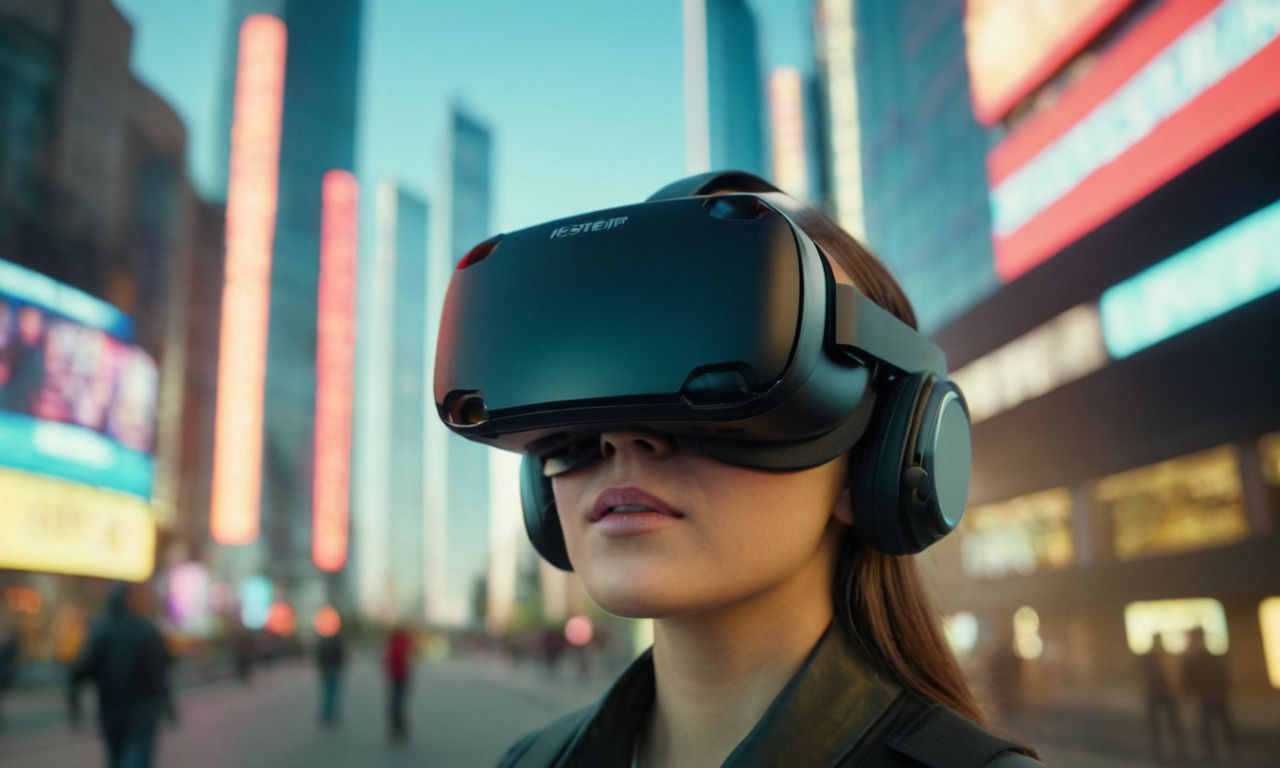Introduction
In 2023, the landscape of in-game advertising continues to evolve, with a significant focus on static in-game advertising. This form of advertising plays a crucial role in modern gaming, offering developers and advertisers various opportunities to monetize games effectively. Static in-game advertising refers to the placement of non-moving ads within the game environment, seamlessly blending with the gaming experience. These ads are strategically positioned to capture the players' attention without disrupting gameplay.
The Evolution of In-Game Advertising
Historical Perspective on In-Game Advertising
In-game advertising has come a long way since its inception. Initially, basic static ads were prevalent, offering limited opportunities for engagement. However, as technology advanced, so did in-game advertising strategies. Advertisers started exploring dynamic ad placements that could change in real-time based on user behavior and preferences.
Emergence of Dynamic Ad Placements in Games
Dynamic ad placements revolutionized the in-game advertising space by introducing personalized and interactive ad experiences for players. These ads could adapt to different contexts within the game environment, providing a more engaging and relevant promotional platform for brands. The ability to target specific demographics and measure ad performance in real-time made dynamic placements a game-changer in the advertising industry.
Understanding Static In-Game Advertising
Static in-game advertising encompasses a variety of ad types that do not move or change during gameplay. These ads are strategically integrated into the game environment, such as billboards, posters, or branded objects, creating a sense of realism and immersion for players. Some common types of static ad placements include product placements, sponsored items, and virtual in-game signage.
Definition and Types of Static In-Game Advertising
Static in-game advertising involves the placement of unchanging ads within the game world. These ads remain constant throughout gameplay, ensuring continuous exposure to players. Some types of static ads include:
Branded Objects: Virtual objects within the game environment that display a brand's logo or product.
Billboards and Posters: Static ads placed in strategic locations within the game, visible to players as they navigate the virtual world.
Product Placements: Integration of real-world products or brands into the game narrative, offering a subtle form of advertisement.

Examples of Successful Static Ad Placements in Games
Successful integration of static ads in games has been observed in various titles, showcasing the effectiveness of this advertising approach. Games like "FIFA" feature in-game billboards displaying real-world brands, while racing games often include sponsored vehicles with brand logos prominently showcased. Additionally, open-world games like "Grand Theft Auto" incorporate product placements seamlessly into the game environment, enhancing realism and player immersion.
Benefits of Static Advertisements for Developers and Advertisers
Static in-game advertising offers several benefits for both developers and advertisers. For developers, static ads provide a non-intrusive revenue stream that can support game development costs and enhance the overall gaming experience without compromising gameplay integrity. Advertisers benefit from increased brand exposure and audience engagement, as static placements enable continuous visibility throughout the gameplay experience. Additionally, static ads allow for targeted brand placements based on game context and audience demographics, maximizing ad effectiveness and ROI.
Dynamic Ad Placements in Gaming
In the realm of in-game advertising in 2023, dynamic ad placements play a pivotal role in reaching players effectively. These ads are characterized by their ability to be changed or updated in real-time, keeping the advertising content fresh and relevant. This contrasts with static ad placements, which remain consistent throughout gameplay.
Introduction to Dynamic In-Game Advertising
Dynamic in-game advertising involves leveraging technology to serve targeted ads to players based on various factors such as demographics, behavior, and gameplay context. By integrating this form of advertising, developers can ensure that the ads align with the interests and preferences of their audience.
Comparison of Static and Dynamic Ad Placements
While static ads offer stability and predictability in terms of placement, dynamic ads bring flexibility and adaptability to the table. Dynamic placements enable advertisers to tailor their messages in response to real-time data, staying current and engaging for players.
Advantages and Disadvantages of Dynamic Advertisements in Games
Advantages:

Targeted Reach: Dynamic ads allow for precise audience targeting, increasing the chances of conversion.
Real-time Optimization: Ad content can be altered based on performance metrics, enhancing overall effectiveness.
Contextual Relevance: Ads can be aligned with in-game scenarios, making them more immersive for players.
Disadvantages:
Technical Complexity: Implementing and managing dynamic ad placements can require specific technical expertise.
Potential Intrusiveness: There is a risk of ads being too intrusive if not carefully integrated into the gaming experience.
Enhancing User Experience Through Ads
Ensuring a seamless and non-disruptive user experience is fundamental to successful in-game advertising strategies in 2023. By prioritizing user experience, developers can strike a balance between monetization goals and player satisfaction.
Strategies to Ensure Ads Do Not Disrupt Gameplay
Non-Intrusive Placement: Placing ads strategically within the game environment without interrupting gameplay flow.
Opt-out Options: Providing players with the choice to opt out of certain ad experiences, respecting their preferences.
Relevant Rewards: Offering in-game rewards or bonuses in exchange for engaging with ads, creating a value exchange for players.
Best Practices for Integrating Ads Seamlessly into the Gaming Experience
Native Integration: Embedding ads organically within the game world to maintain cohesiveness.
Incentivized Ads: Incorporating ads in a way that adds value to the player experience, such as offering bonus content or power-ups.
A/B Testing: Continuously testing different ad integration methods to identify the most effective approaches for both monetization and user satisfaction.
Monetization Strategies in Gaming
In-game advertising stands as a potent tool for developers looking to monetize their games while keeping them accessible to players. By implementing thoughtful advertising strategies, developers can unlock new revenue streams and foster sustainable growth in the gaming industry.
How In-Game Advertising Contributes to Monetization

In 2023, in-game advertising contributes significantly to monetization efforts by diversifying revenue sources beyond traditional game sales. Developers can leverage ad placements to generate ongoing income while keeping games free or affordable for a wider player base.
Case Studies Illustrating Successful Monetization Through Ads in Games
Case Study 1:
Game Title: "Virtual Racing Challenge"
Monetization Approach: Implemented dynamic ad placements during loading screens and race breaks.
Results: Increased ad engagement by 30%, leading to a 20% rise in overall revenue without compromising player retention.
Case Study 2:
Game Title: "Medieval Quest Adventures"
Monetization Approach: Integrated rewarded video ads for in-game currency rewards.
Results: Boosted player engagement by 40%, translating into a 25% uplift in in-app purchases and ad revenue.
By understanding the nuances of dynamic ad placements, prioritizing user experience, and implementing effective monetization strategies, developers can harness the power of in-game advertising to drive growth and sustainability in the ever-evolving gaming landscape of 2023.
Future Trends of In-Game Advertising
In the ever-evolving landscape of the gaming industry, in-game advertising continues to play a pivotal role in revenue generation for developers and advertisers. Looking ahead to 2023 and beyond, several key trends are set to shape the future of in-game advertising.
Predictions for the direction of in-game advertising in 2023 and beyond
Personalized Ad Experiences: With the increasing availability of user data and advanced algorithms, personalized ad experiences will become more prevalent in in-game advertising. Developers and advertisers are poised to leverage player preferences and behaviors to deliver targeted ads that resonate with audiences.
Integration of Augmented Reality (AR) and Virtual Reality (VR): The integration of AR and VR technologies into gaming experiences opens up new avenues for immersive advertising. In-game ads will not only be visually engaging but also interactive, blurring the lines between virtual content and real-world advertising.
Ephemeral Ad Placements: The rise of ephemeral ad placements within games is expected to gain momentum. These temporary ads, such as limited-time events or seasonal promotions, create a sense of urgency and drive engagement among players, fostering a dynamic and evolving advertising landscape.
Technological advancements shaping the future of game advertising
Machine Learning and AI: Machine learning algorithms will play a crucial role in optimizing ad placements within games. By analyzing player behavior in real-time, AI can deliver tailored ads that are more likely to capture the attention of gamers, thus maximizing advertising ROI.
Blockchain Technology: The integration of blockchain technology in in-game advertising offers enhanced transparency and security. Smart contracts enable advertisers to verify ad placements and ensure that developers are fairly compensated, fostering trust and accountability within the ecosystem.
Interactive Ad Formats: Interactive ad formats, such as playable ads and mini-games, are set to become increasingly popular. These engaging formats not only provide entertainment value to players but also drive higher levels of interaction and brand engagement, ultimately leading to better conversion rates.
Conclusion
In conclusion, static in-game advertising remains a cornerstone of the gaming industry, offering developers and advertisers a lucrative opportunity to monetize games effectively. As we look towards the future of in-game advertising in 2023, it is clear that innovation and technology will continue to redefine how ads are integrated into gaming experiences.
In summary, the importance of static in-game advertising lies in its ability to deliver targeted, non-intrusive ads that enhance the overall gaming experience. By staying ahead of emerging trends and embracing new technologies, developers and advertisers can unlock the full potential of in-game advertising as a powerful tool for reaching and engaging with audiences in the gaming sphere.



